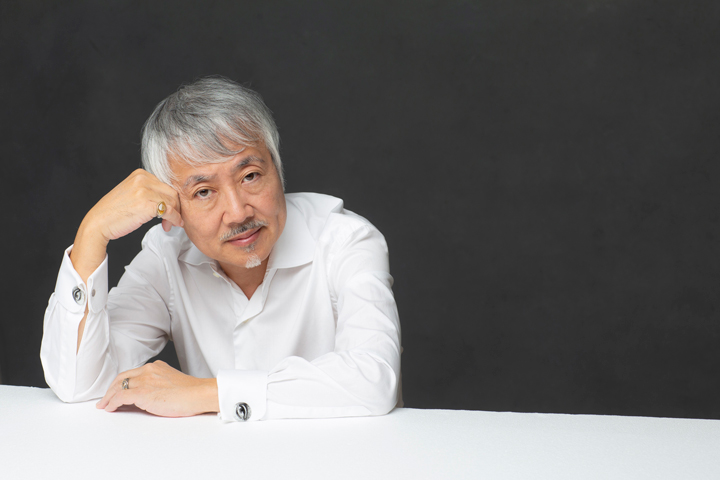CONTACT
YASUAKI SHIMIZU
無声映画との合体 ワイルドに
Wild Sounds for Silent Film
クイズ番組で、「さて映画ピアノ・レッスンの作曲家の名前は?」という出題に、回答者全員、競って机上のボタンをピンポンピンポン。それ程ポピュラーになった前衛作曲家の来日公演(6月2日、東京・錦糸町のすみだトリフォニーホール)。
いや~相変わらずワイルドで力強い演奏。ナイマンは、精神の重量挙げ選手権があったら金メダル確実! というほど精神力がありそう。本公演、演目の目玉はやはりジガ・ヴェルトフ監督のサイレント映画「カメラを持った男」との管弦による生シンクロ演奏。これは良かった!
近年、ますます噛み砕かれ、およそ味抜きされた映像と音の関係が、といって、萎えてる場合じゃないなと久しぶりに感じた。まずきっぱりして気持ち良いの は、ナイマンの、この映画と自身の音楽を合体させたら凄いことになるんだぞ、という直感と確信が劇場空間に迸っていたということ。
またこの映画と音楽にはルサンチマン的な嘘が無い。聴衆はたんたんと力と力が絡み合い上昇している様を感じるだけだ。時間というのは流れていないんだよ。 はたまた30秒後のシーンは、16小節後の音符は未来からやって来るんじゃないんだよと言わんばかりに「たった今」の深層に向けて様々な意味のモチーフを 投げかける。
ヴェルトフ監督の「カメラを持った男」が制作された1929年当時のソビエトは、当然大きな政治問題や、それに関連した芸術運動で大混乱の世であったと 思う。プロパガンダ映画や写真、絵画、演劇、文学等々。統制された言語表現の限られた範囲のなかで、皆、網の目を潜りながら個々の手法を模索し、真理の解 明に明け暮れていただろうと想像する。しかしそんな中、この映画は何と気持ちの良い勢いで根源を浮かび上がらせていることだろう!
働く男、マニキュアを塗る女性、靴磨き、躍動する機械等の市民の日常を綴る短い断片が、それぞれの差異を踏み台にしてバウンドしながら突き進む。カメラを 持った男は映画の中に登場しながらも市民の日常を撮り続ける。その映画を劇場で市民が観賞する(この映画の中で)という三角関係、いや循環構造になってい るところがまた凄い!
ところで映画冒頭のタイトル部分に面白い注意書きがある事に気がついた。そこには、観賞上の注意—-これは世の事象を記録した映画的コミュニケーションにおける実験である。字幕なし(字幕不使用映画)演劇なし(装置・俳優など不使用映画)と。
要するに、ここに示すことが、人々が悶々として止まない疑問の答えであるが、それは文章やドラマツルギーを使った演劇で説明するには及ばず、この映像のそ れぞれ動く実態から生まれる差異が、正しくコミュニュケーションの原動力である。またそれがスタート地点だ。だからそのスタンスから出発しようよと言って いるように思える。
ナイマンがこれを見過ごすはずはなかった。彼は、それに輪をかけて意味をデフォルメした。それがナイマンの地であるバッロク音楽の肌触りや、ジャジャ ジャジャジャジャという激しい小刻みのリズムに突き動かされて長~いクライマックスを繰り広げる。しかし突然、まるで指輪をつけて透明となったギュゲスが 王妃の部屋に忍んで息を潜めるように治まる。が、突然またドカ~ンとクライマックスに。あ~もうなんだか…。
Yasuaki Shimizu / translated by Alfred Birnbaum
The question comes up on a quiz show: “. . .And what is the name of the composer of the film score for The Piano Lesson?” All the contestants scramble to hit their desktop buttons—beeep! An avant-garde composer this popular? Yes, and he’s just played a command performance here in Japan (2 June at Sumida Triphony Hall, Kinshicho.)
And what a wild, powerful performance it was—as expected, of course. If they held championships in mental-weightlifting, Michael Nyman would be a gold medalist for sure, such was his psychological impact. This time, the real showpiece was his synchronised live string score for the Soviet silent film, Dziga Vertov’s Man with a Movie Camera (1929). Just brilliant!
Much chewed over in recent years until largely devoid of taste or texture, the relationship between film and music was brought back to life for me for the first time in a very long while. Particularly refreshing right from the start was the intuitive buzz throughout the hall that Nyman’s music coupled with this film was going to be nothing short of amazing.
And no phony ressentiment to either the film or the music. The audience was kept on edge by a brisk matching of strength with strength. As if the scene coming up in 30 seconds, the musical passage after the next 16 bars were hailing from the future, nuance-charged motifs plumbed the deepest levels of “this very minute.”
The Soviet Union at the time of Vertov’s Man with a Movie Camera was fraught with enormous political problems, reflected in a great turmoil in the arts: propaganda films and photos, paintings, theatre, literature, etc. Within the proscribed limits of verbal expression, I imagine everyone was working night and day, grasping for personal techniques, finding loopholes through which to illuminate their truth. Yet out of all that struggle, this one film stands out for its wonderfully enjoyable energy.
Woven out of short clips from citizens’ daily life—workmen, manicurist, shoe shine, pulsing machines—each treading forward at a different pace on the same stage. The man with the camera appears on camera as well, going about his daily activity of filming citizens’ activities. And then citizens view the film at the cinema (also in the film), completing a triangular, or rather an amazingly circulating structure.
But then I noticed a curious disclaimer during the title sequence at the beginning of the film, a notice to the viewer that this was an experiment in cinematic communication documenting the world at large. No subtitles, no staging.
In other words, shown here was an answer to the perennial human query, all explained dramatically without use of text or dramaturgy. Rather the differences between the various states of motion in the images themselves provide the real driving force for communicating. Or maybe, the starting line, the stance from which the filmmaker sought to launch forth.
Nyman is not one to miss this point. He drew a circle around it and played various distortions upon its significance. All by means of Nyman’s underlying baroque complexion and sharp rhythms building ever so minutely da-da-da-da toward a climax Then suddenly, as if an invisible ring-bearing Gyges had stolen into the princess’ chamber—boom!—came the climax. Ah, how to express . . .?
